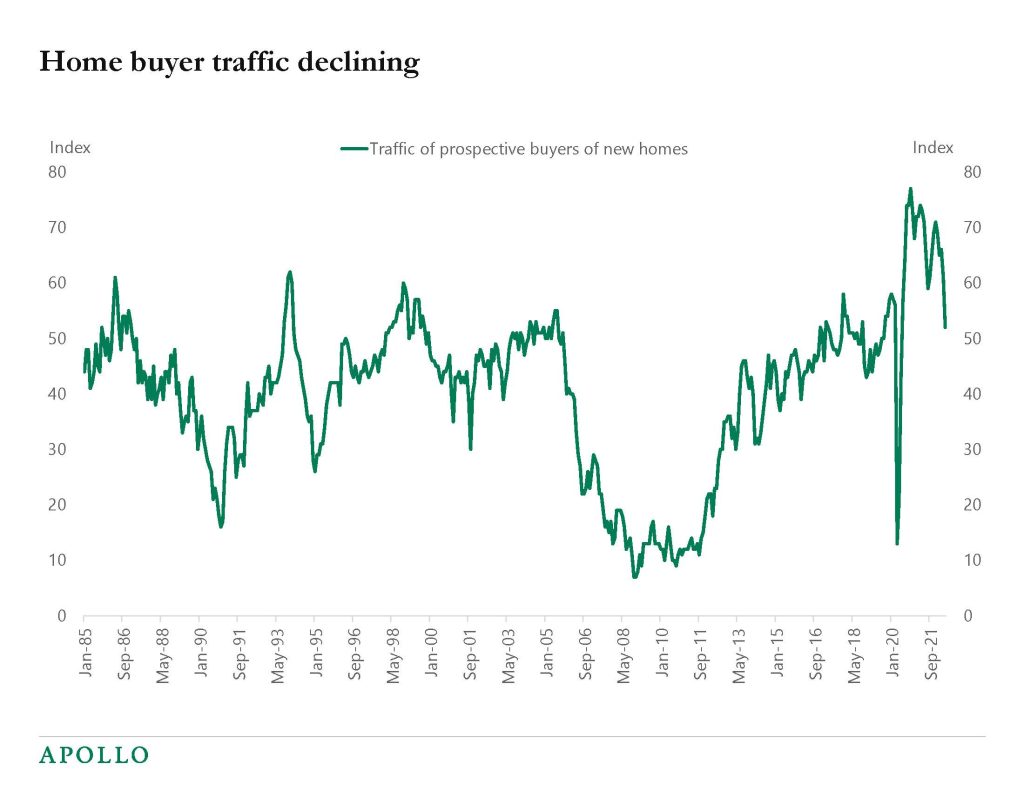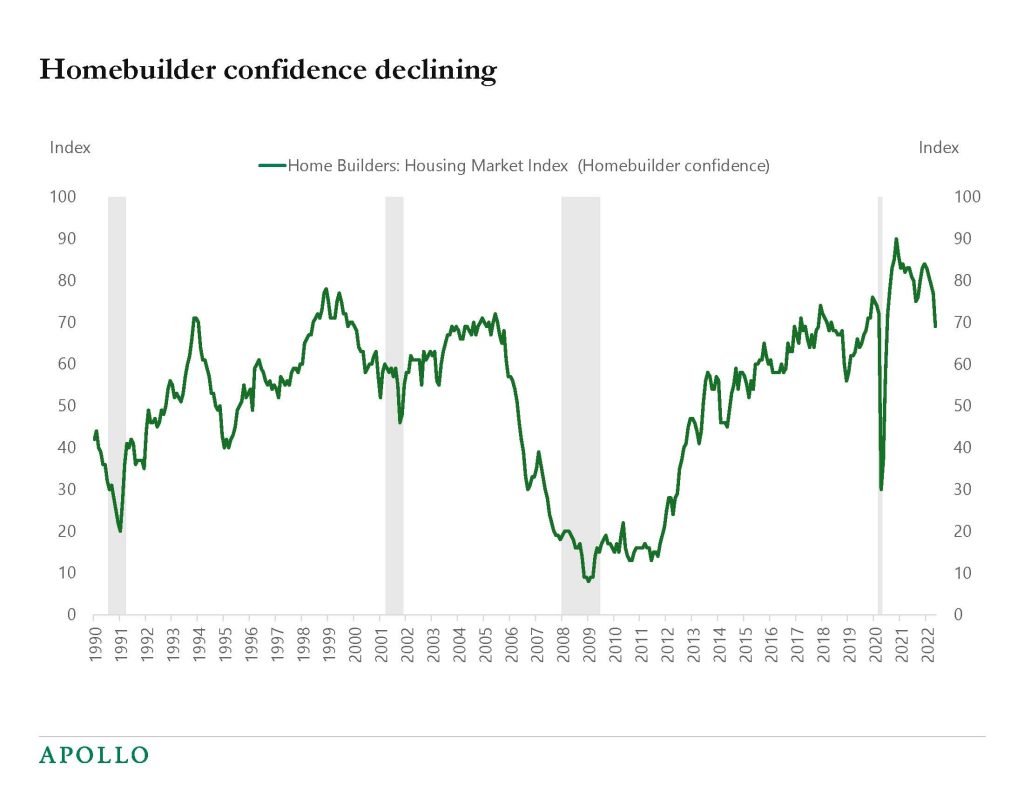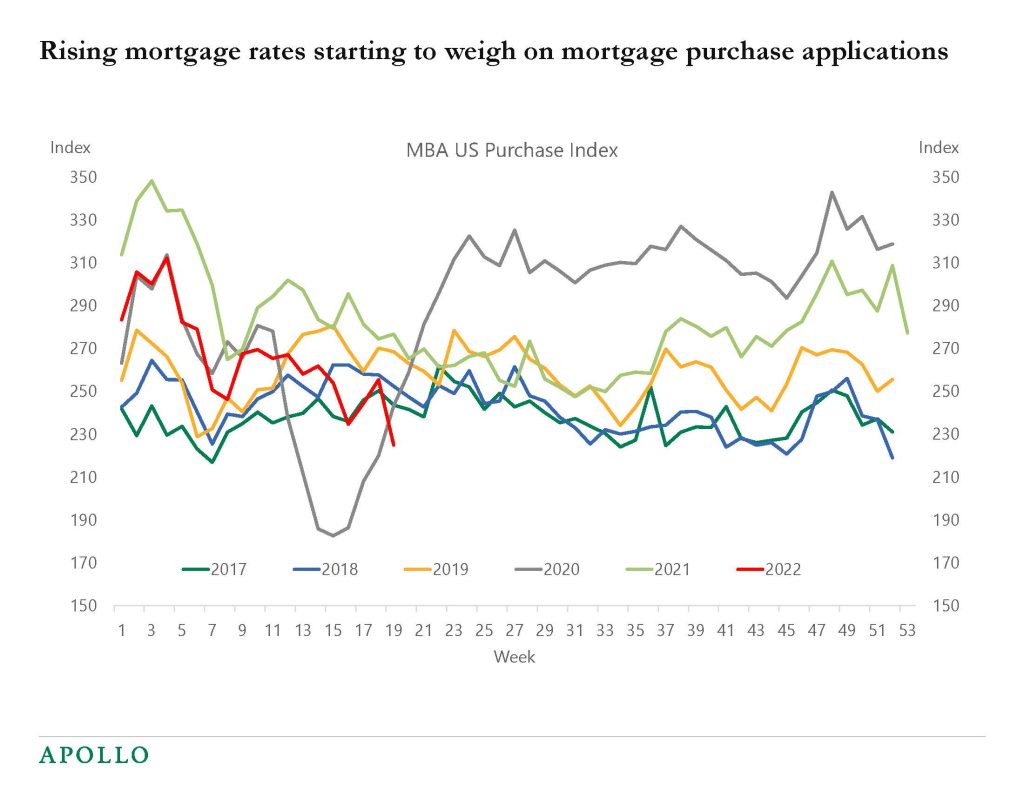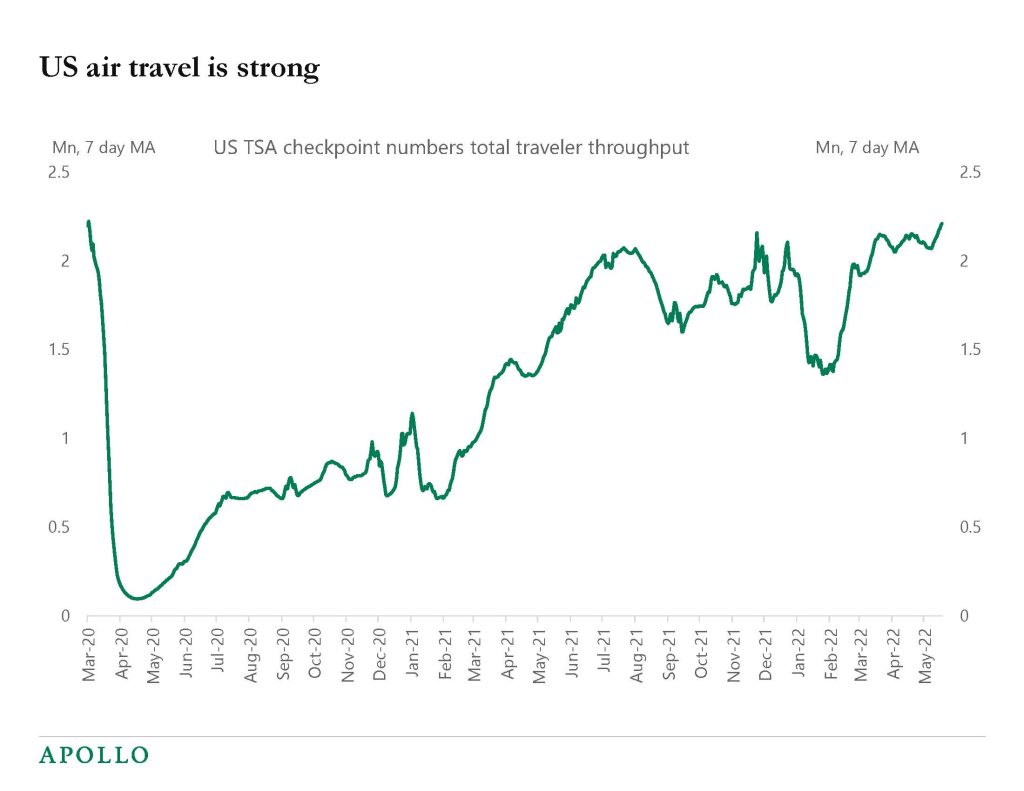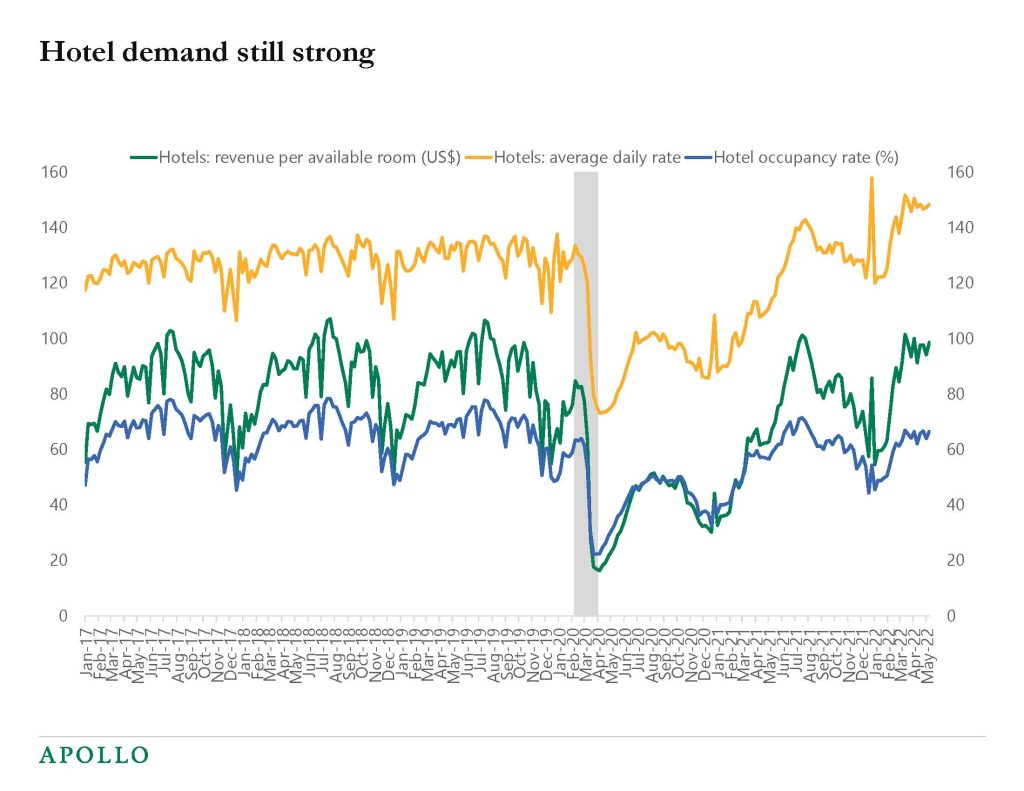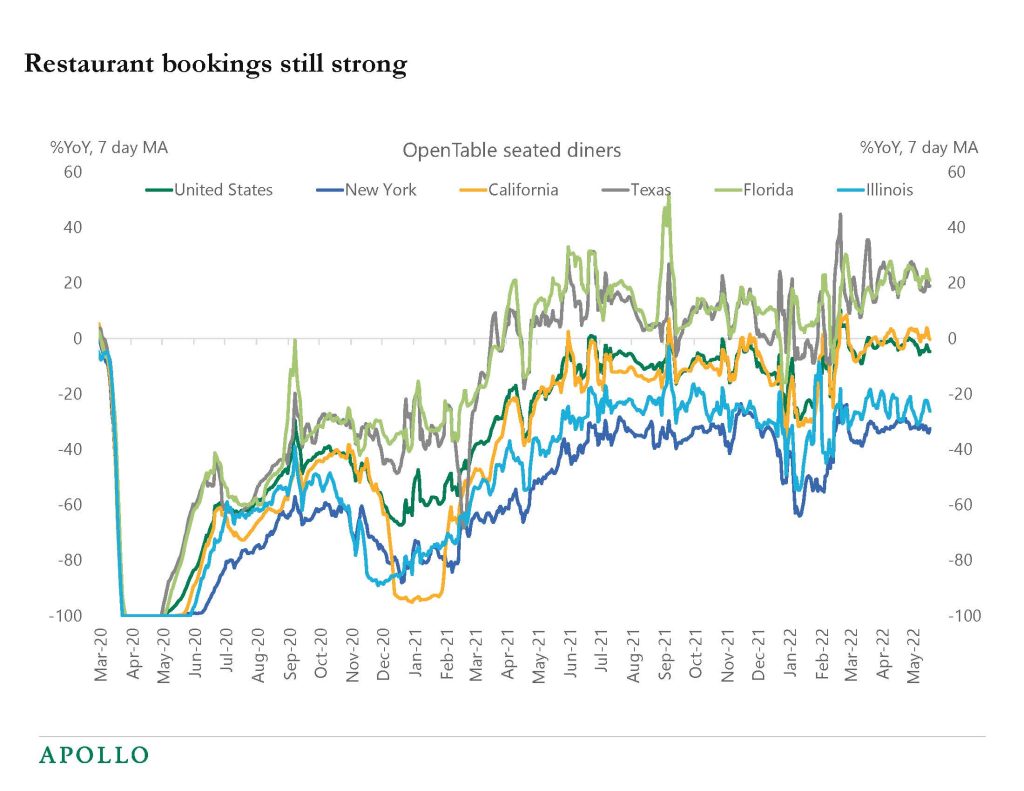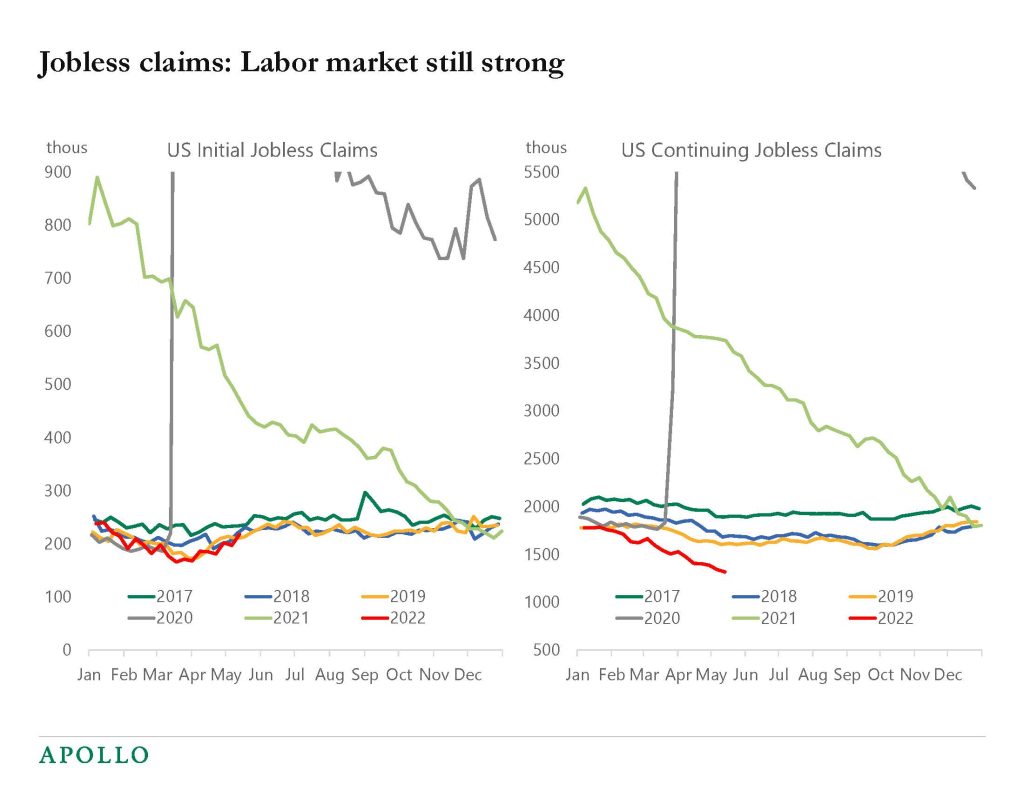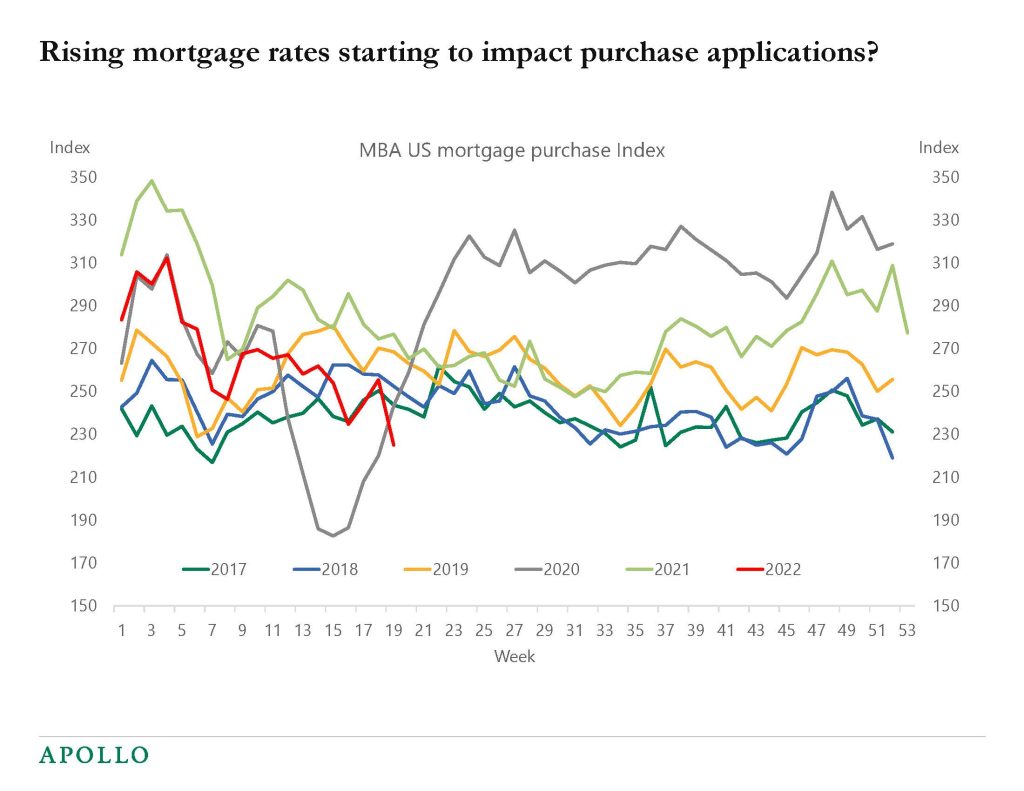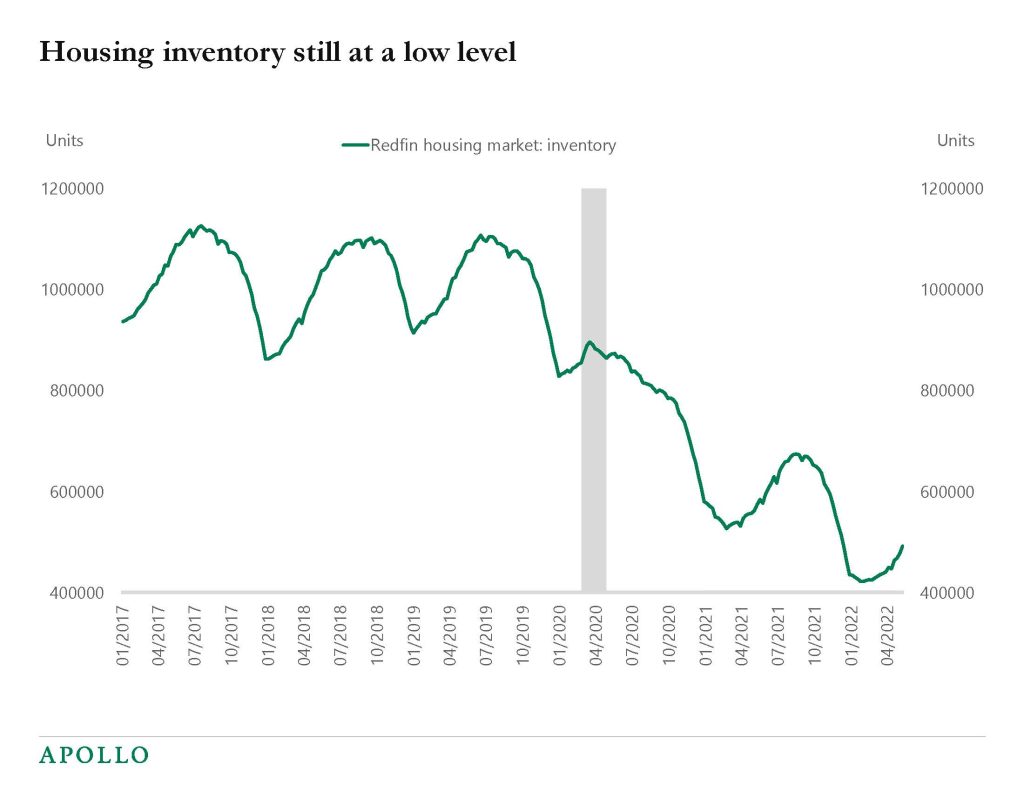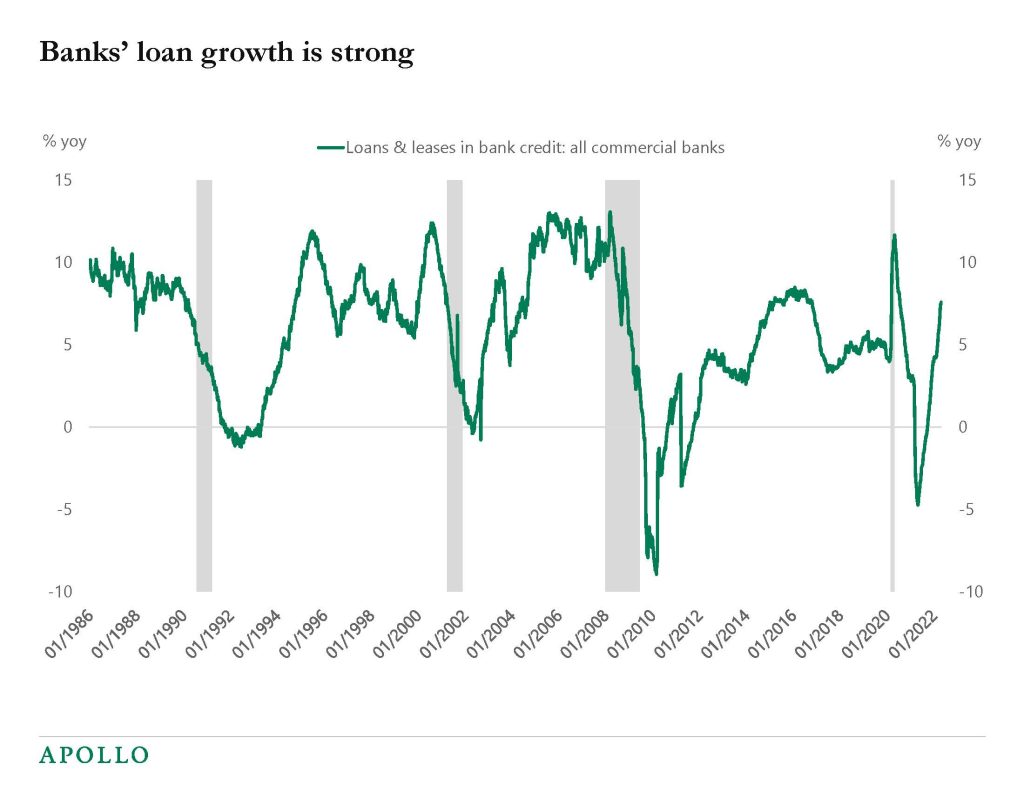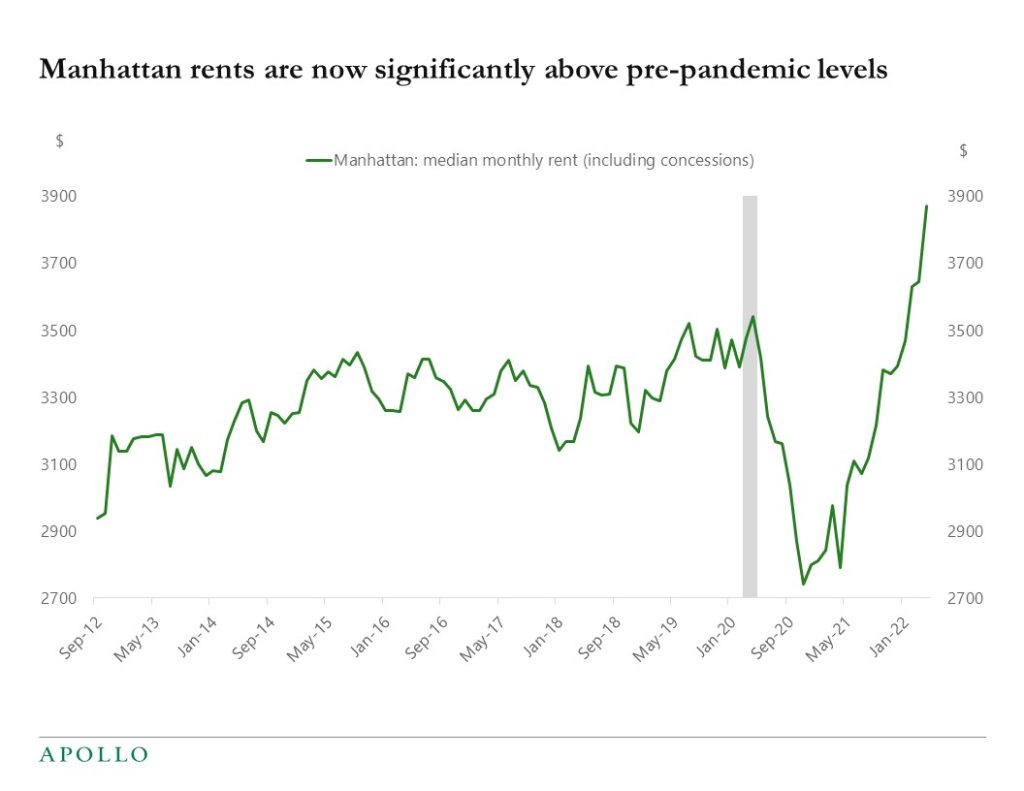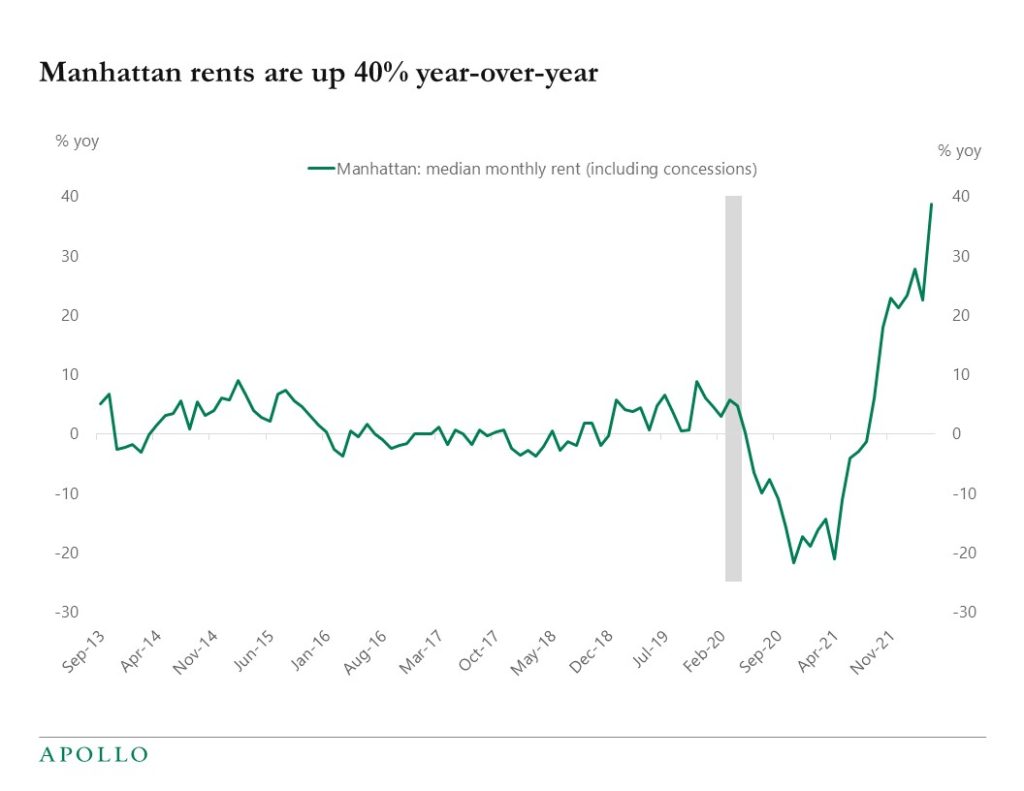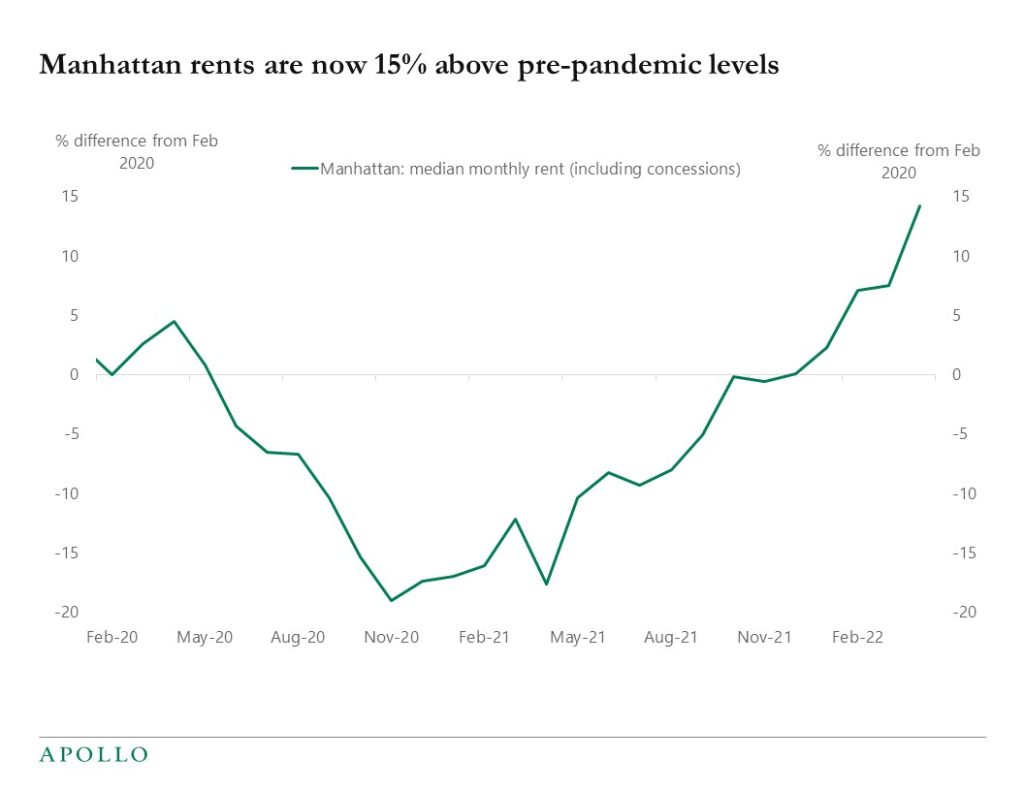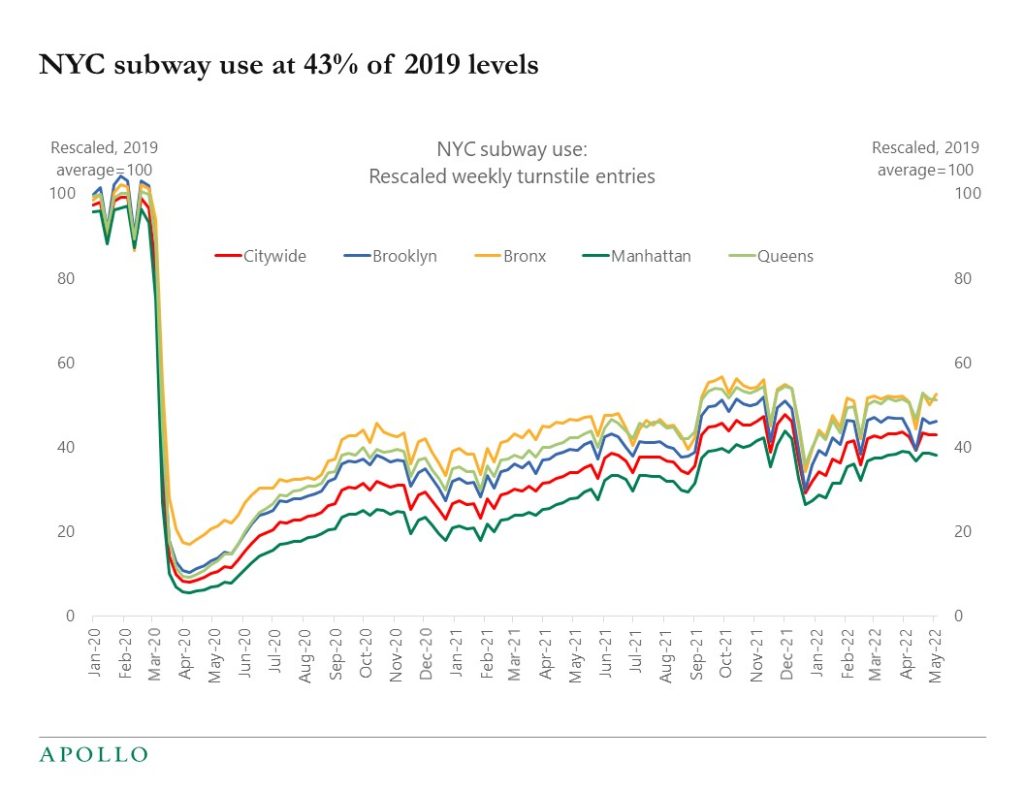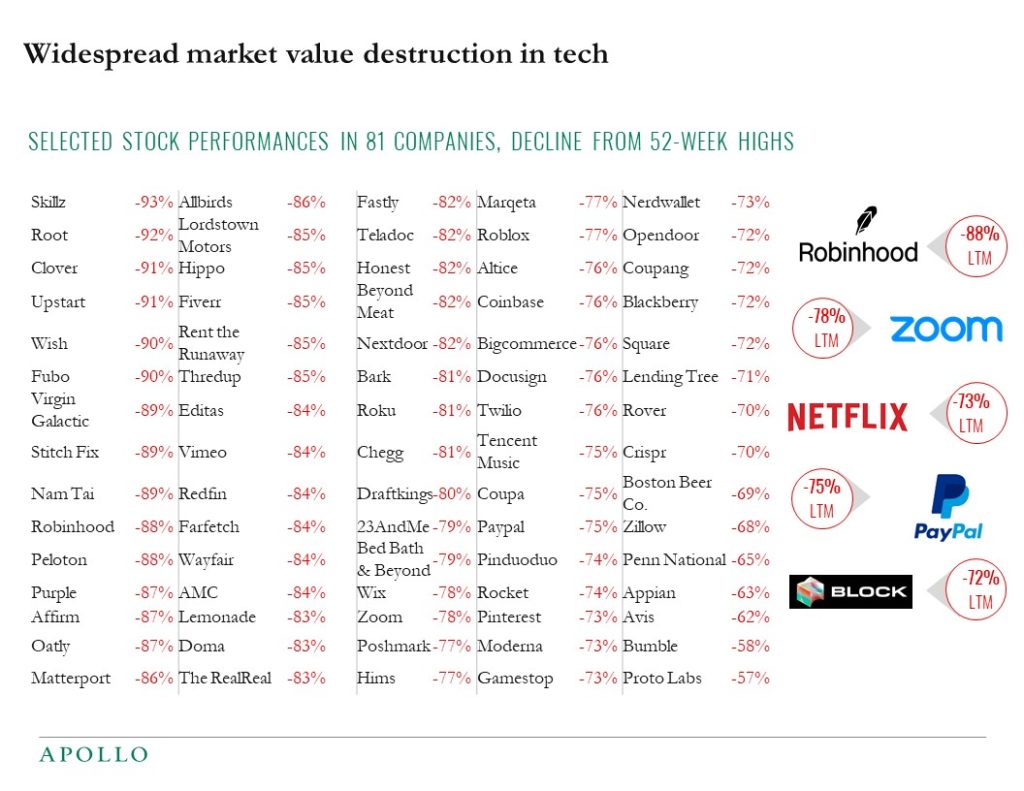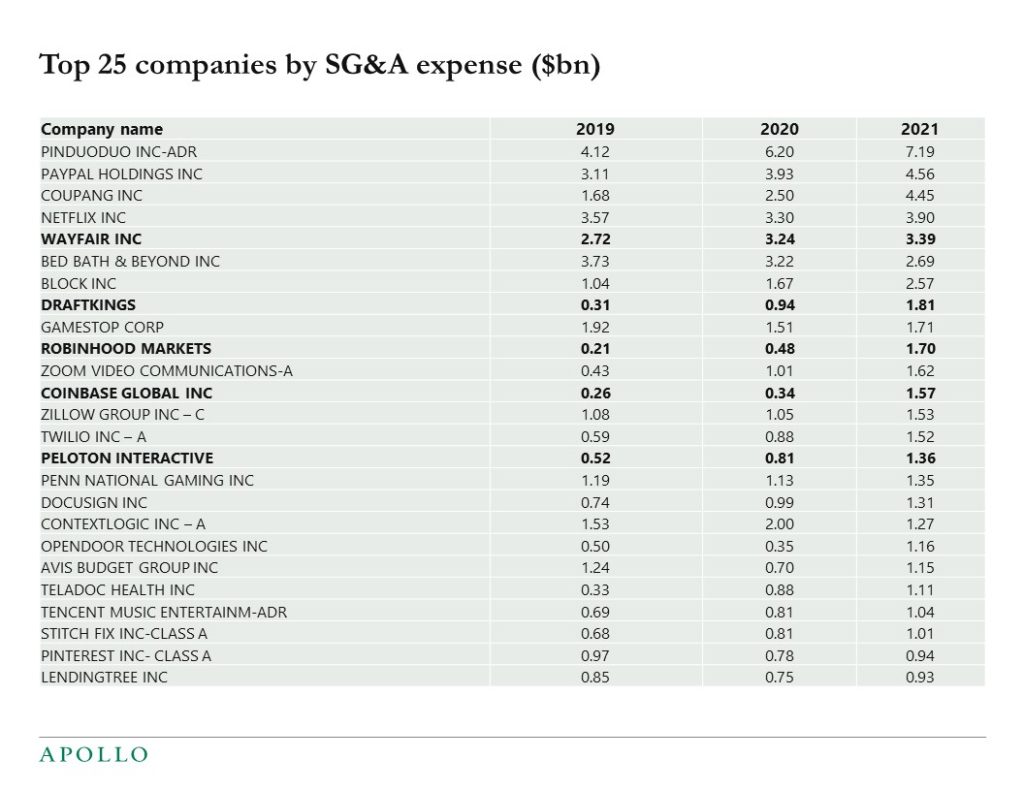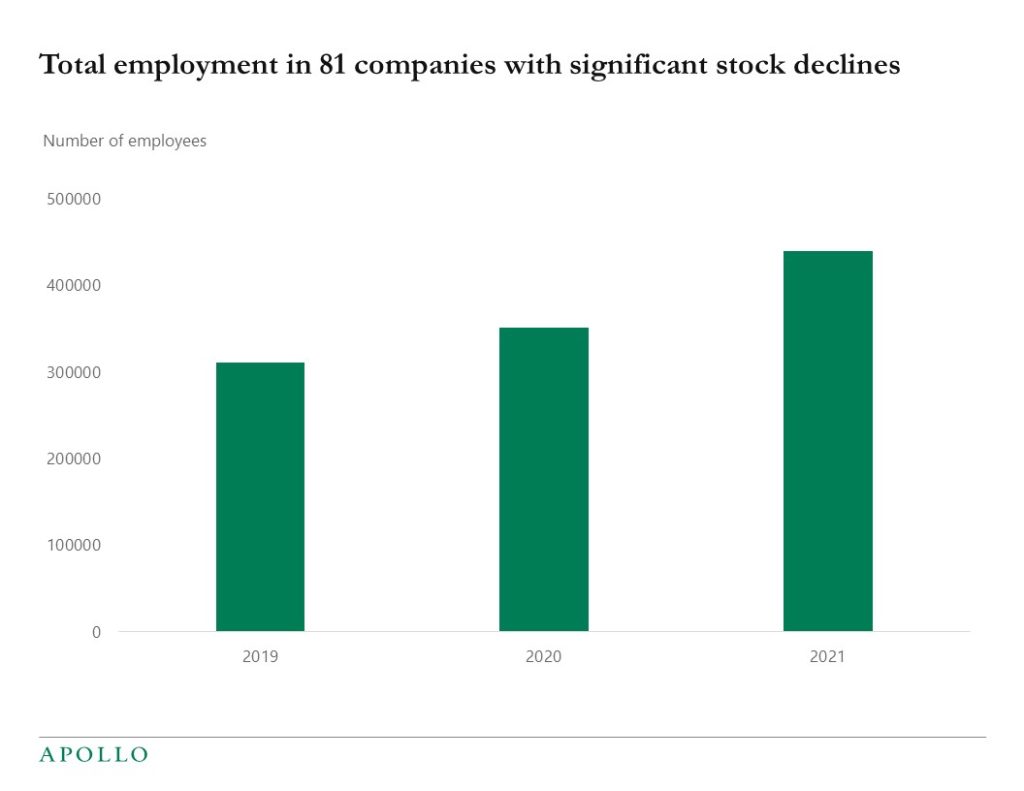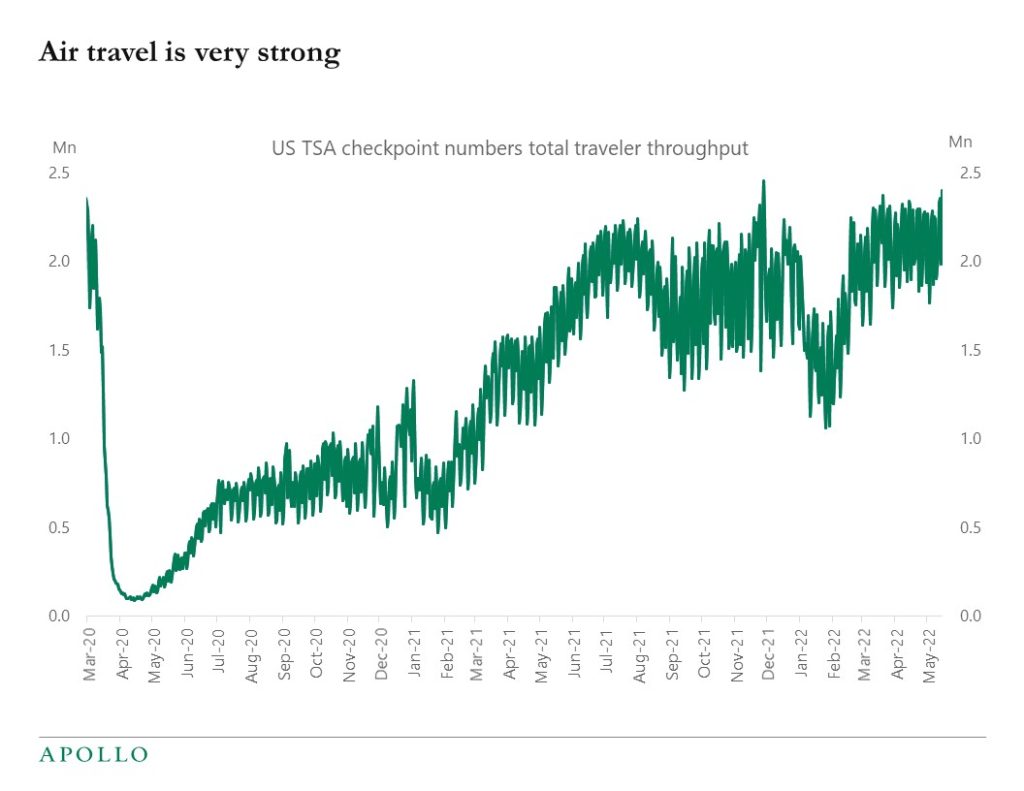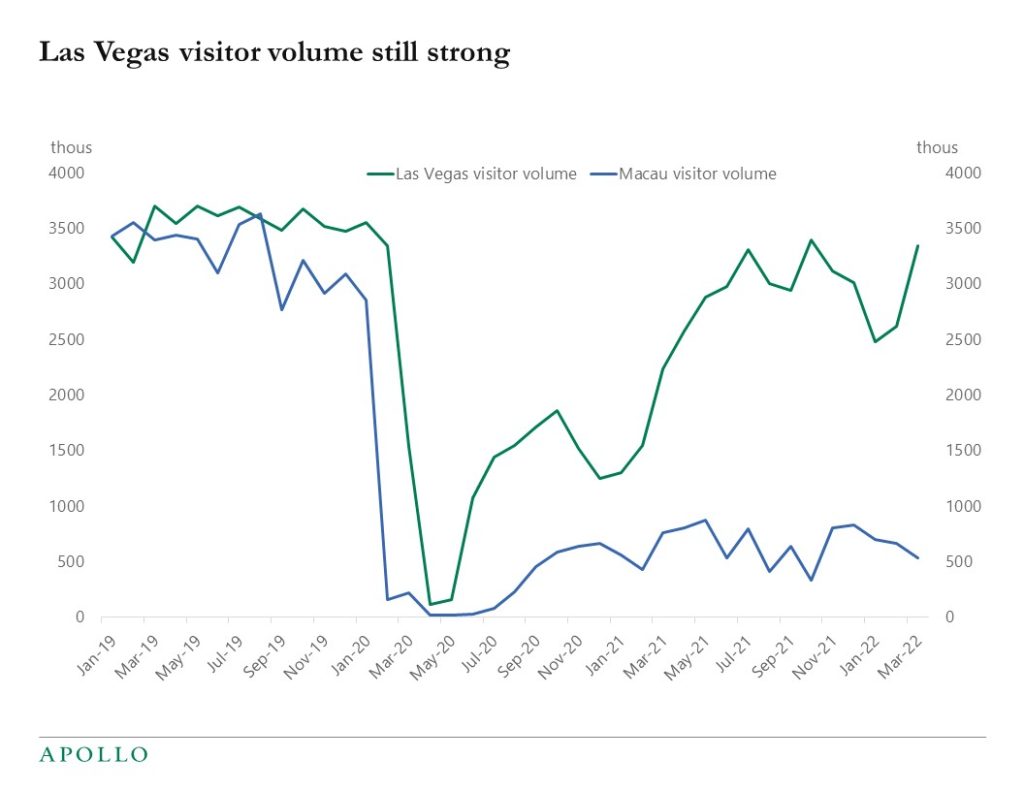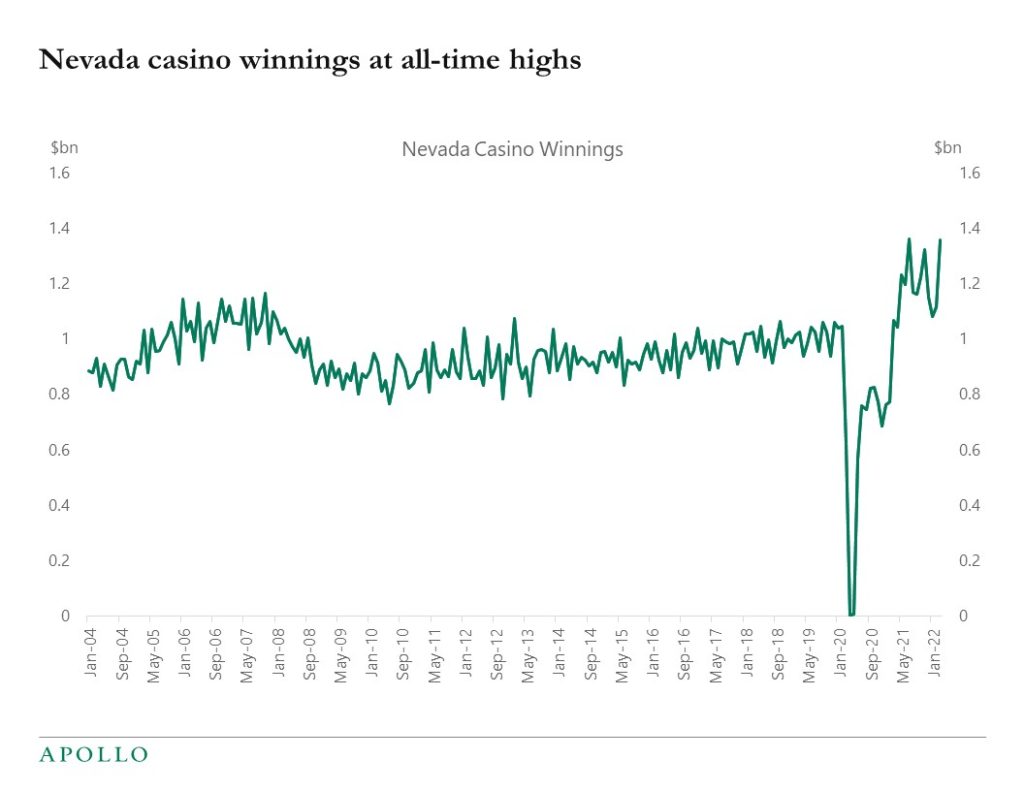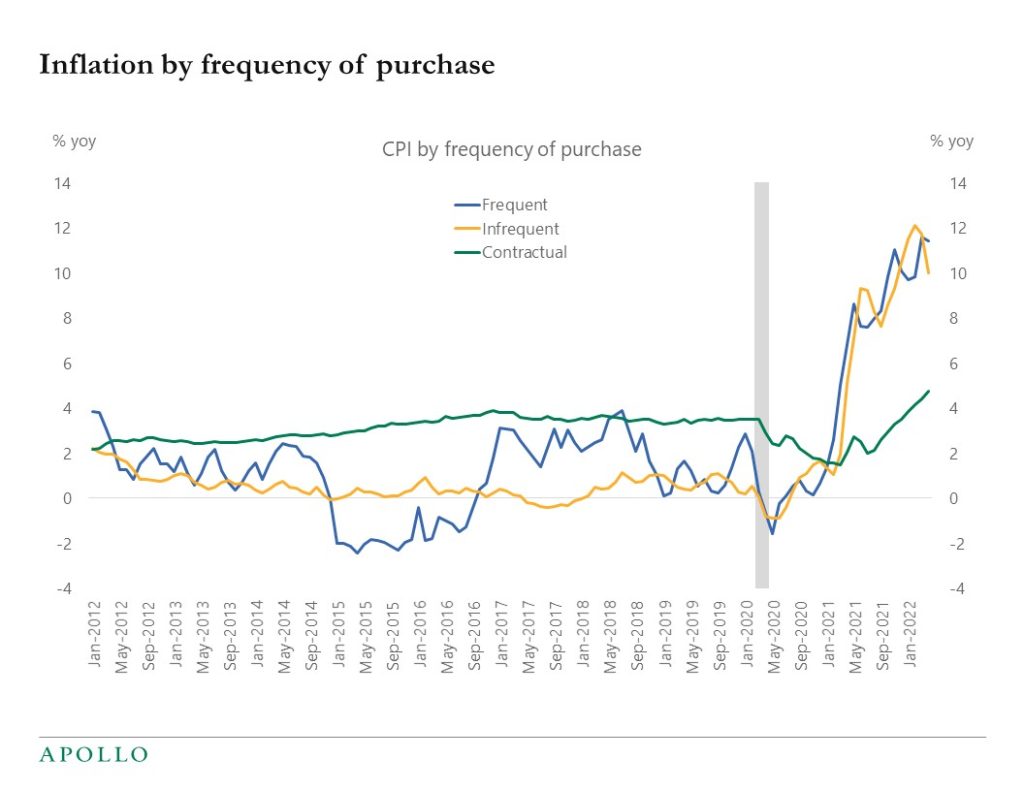Last week we received retail sales data from which we learned that the consumer continues to do relatively well on the back of strong job and wage growth. A number of retailers reported last week as well, which generated talk in the markets about whether a slowdown was coming. But they too reported strong consumer demand. Their challenges mainly came from the cost side—on supply chain, on labor and wages, and on energy and other input costs. In the week ahead we will receive the FOMC minutes, which will shed more light on how the Fed is thinking about inflation and growth. The minutes are likely to reinforce the same messages we’ve been hearing: that the economy remains strong, that inflation remains a problem, and that interest rates will therefore need to go higher. Meanwhile, we’re beginning to see increased risks of stagflation as the consensus expects inflation to rise and growth to fall. Against this backdrop, we anticipate continued market volatility fueled by ongoing uncertainty about rates and inflation, as well as downward pressure on equities.
This presentation may not be distributed, transmitted or otherwise communicated to others in whole or in part without the express consent of Apollo Global Management, Inc. (together with its subsidiaries, “Apollo”).
Apollo makes no representation or warranty, expressed or implied, with respect to the accuracy, reasonableness, or completeness of any of the statements made during this presentation, including, but not limited to, statements obtained from third parties. Opinions, estimates and projections constitute the current judgment of the speaker as of the date indicated. They do not necessarily reflect the views and opinions of Apollo and are subject to change at any time without notice. Apollo does not have any responsibility to update this presentation to account for such changes. There can be no assurance that any trends discussed during this presentation will continue.
Statements made throughout this presentation are not intended to provide, and should not be relied upon for, accounting, legal or tax advice and do not constitute an investment recommendation or investment advice. Investors should make an independent investigation of the information discussed during this presentation, including consulting their tax, legal, accounting or other advisors about such information. Apollo does not act for you and is not responsible for providing you with the protections afforded to its clients. This presentation does not constitute an offer to sell, or the solicitation of an offer to buy, any security, product or service, including interest in any investment product or fund or account managed or advised by Apollo.
Certain statements made throughout this presentation may be “forward-looking” in nature. Due to various risks and uncertainties, actual events or results may differ materially from those reflected or contemplated in such forward-looking information. As such, undue reliance should not be placed on such statements. Forward-looking statements may be identified by the use of terminology including, but not limited to, “may”, “will”, “should”, “expect”, “anticipate”, “target”, “project”, “estimate”, “intend”, “continue” or “believe” or the negatives thereof or other variations thereon or comparable terminology.



